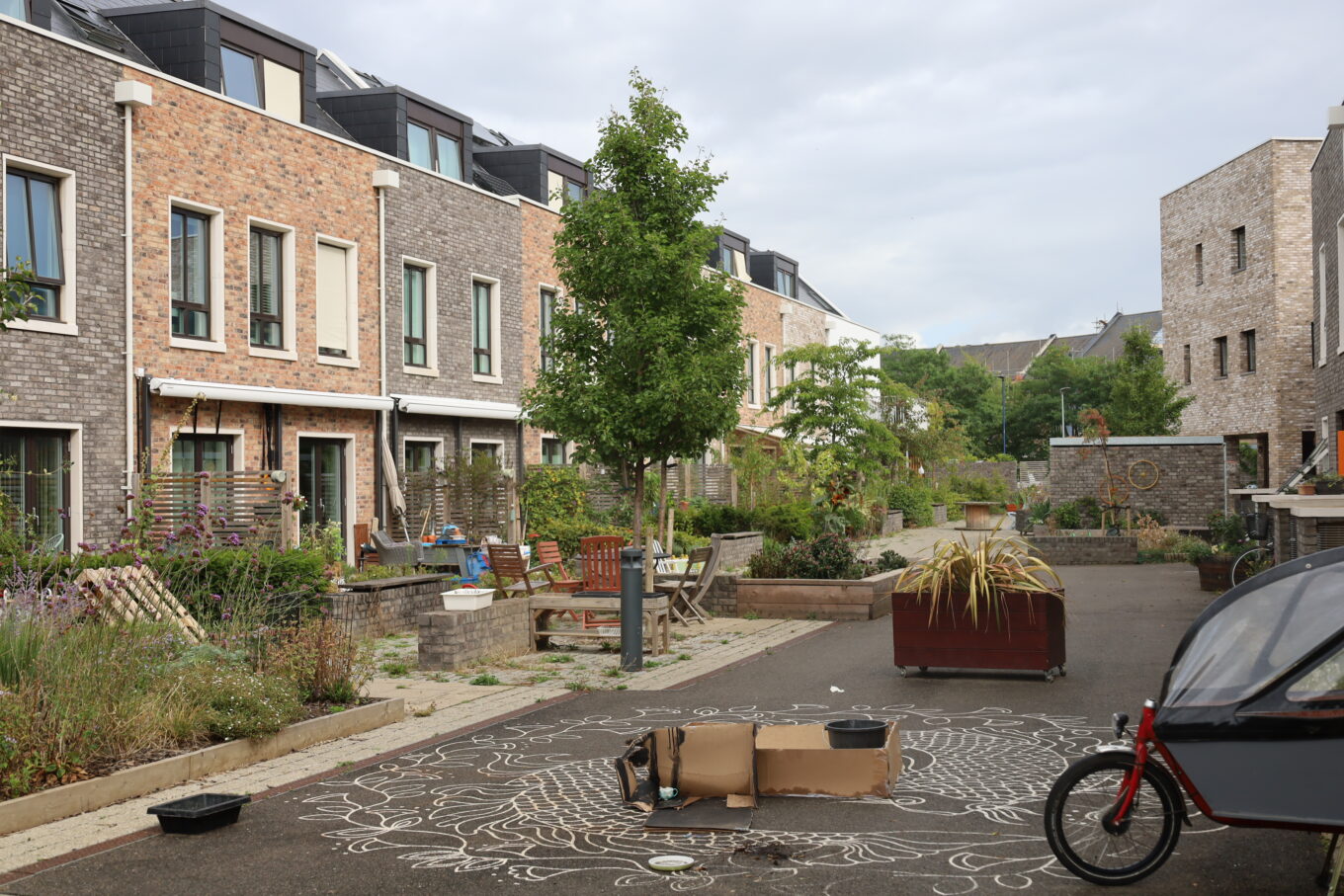Author: Harrison Brewer
According to a very unreliable source, the British housing market is the UK’s 24th most popular conversation, pipped by football, Love Island, and unsurprisingly the weather. Amongst urbanists, I’m sure the topic ranks higher (albeit when the nation’s favourite dating show isn’t showing on our screens) but I have noticed that more of my Gen Z colleagues are talking, mostly complaining, about the UK housing market. Nationally, housing is less affordable, less available, and less attractive than at the turn of the millennium. Affordable options are often further afield, away from friends and family and your favourite places. It’s a choice between affordability and community and it’s driving many people further and further away from each other.
It’s not just prospective buyers who are taking issue with their experience of housing – other generations are finding it equally difficult to stay connected and collective. The UK’s average age has continued to grow older and care home delivery has grown alongside it as an increasingly profitable sector in construction and development. Often sited in rural areas, care home facilities have been critiqued for isolating the elderly through the creation of homogenous micro-communities that exacerbate loneliness, depression, and age-related diseases such as Parkinson’s and dementia. The Covid-19 pandemic highlighted the fragility of our care system as underfunded and understaffed homes struggled to fight a hyper-contagious virus. This doesn’t bode well for a world where pandemics are predicted to increase in frequency and lethality. So when I, along with twenty other urbanists, arrived at Marmalade Lane for a tour of Cambridge’s own intentional community, the mood was hopeful.
Marmalade Lane is a multigenerational co-housing community on the outskirts of the city borne out of a single plot released from a struggling house development. Fifteen years later, we are met with a lively, green, and cosy neighbourhood, littered with hopscotch squares, planters, and tricycles. It felt lived in and cluttered but you couldn’t help feeling as if you were stumbling into something out of Beatrix Potter. We heard stories of ‘family dinners’ at Marmalade Lane where residents come together for communal meals. We heard about the benefits of shared parenting on busy work schedules. For elderly residents, co-housing was a way to combat loneliness in old age and support a community that would support them in return. Residents were able to suggest changes to the area and then implement them, such as Marmalade Lane’s honesty shop stocking household essentials, groceries, and produce.
Co-housing is often described as an ‘intentional community’ where residents choose to participate in what happens in and around their home. Residents co-design their communities which often aim to blend private and public space together, foster informal communal contact between residents, and embed collective resident control and stewardship over their property and environment. Emphasis is placed on enabling people to choose where and importantly whom they live by. Stewardship over shared spaces looks to create social ties which in turn builds a sense of community and connection. By enabling residents to manage their own community, they became invested in their environment and were empowered to make change. Residents were given power over their neighbourhood in a planning system that rarely favours the resident over the developer. In exchange, they were rewarded with a thriving community in a desirable development with more amenities than most new-builds elsewhere.
Marmalade Lane is one example of what that might look like. Co-housing can take the shape of intergenerational apartment blocks, micro-communities encircled by market gardens, or community land trusts in dense urban areas. Marmalade Lane was inspired in part by the Vauban district of Freiburg in Germany, one of Europe’s most successful models of sustainable urban living. Devised by a biologist and an architect, the neighbourhood houses 5,500 residents in a car-free, bike-friendly, low-energy community. Co-operatives and social housing developments sprung up soon after the first residents moved in. Pictures of Vauban depict tiers of solar panels and brightly coloured facades reminiscent of Newcastle’s Byker Wall Estate. What all three demonstrate is the capacity both at home and abroad to construct places people want to live in. Each is a different manifestation of modern models of living which have sat quietly behind market-led housing, never enabled through planning policy and reform nor commercial enough to build at scale. Yet, the struggle seems worth the effort when chatting with residents in North Cambridge.
There were obstacles to making Marmalade Lane a reality. The acquisition of land is the hardest challenge along with the difficulties that come with organising idealistic individuals. Planning also caused issues where policy requirements hamstrung the community into providing superfluous car spaces on their car-free street. These dead spaces were eventually repurposed but could easily have resulted in a refusal if residents were more belligerent. Whilst the planners I know are keen to support co-housing developments, planning requirements can create critical failures where policy and praxis butt heads. For co-housing to be grown at scale, policy needs to reflect the diversity of modern models of living and ensure that well-intended requirements don’t hamstring innovation.
Fundamentally, co-housing is about intention and empowerment. It is predicated on giving the ability to choose how people want to live, enabling them to design it, and empowering them to make it so. What we learned at Marmalade Lane is that one way to build places where people want to live is to enable them to build those places. In exchange, we can have neighbourhoods of high-quality homes that integrate the natural into the urban, reduce loneliness, and foster connection. Places where kids can play in the streets and no one thinks twice about it.






